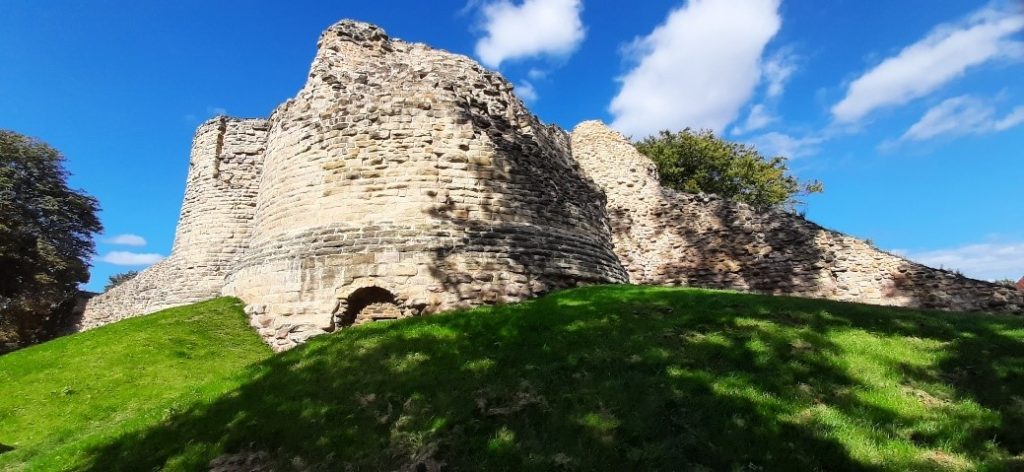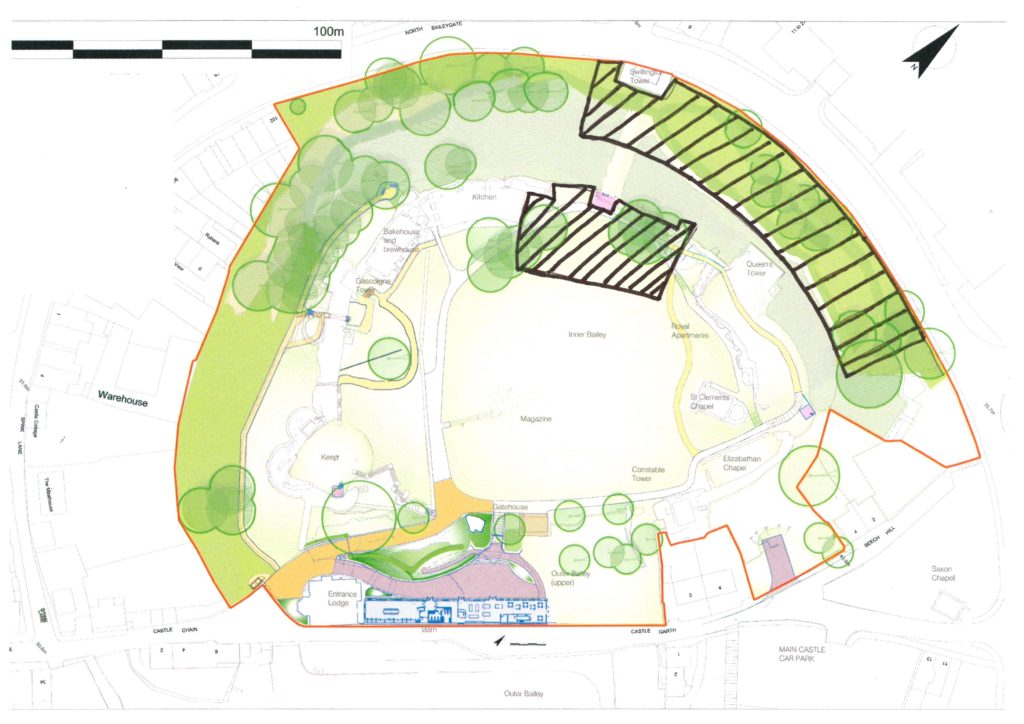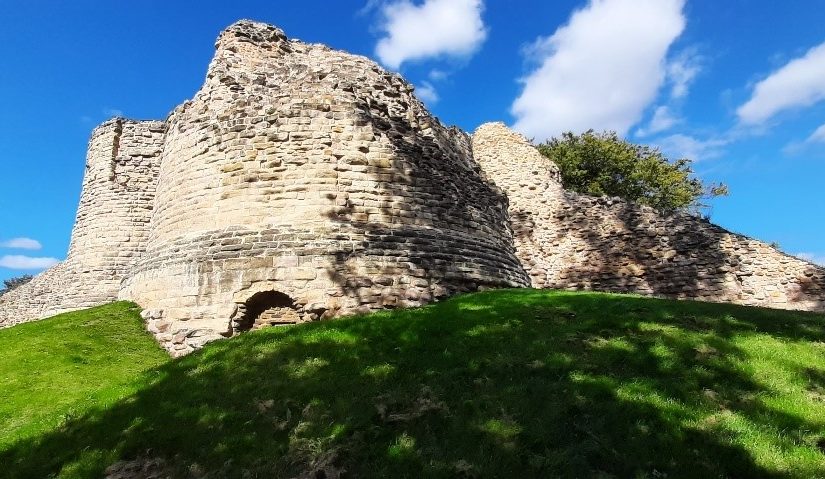Ian Downes from Wakefield Council looks at the geophysical survey being carried out week commencing 9 May 2022 on parts of Pontefract Castle yet to be explored archaeologically. The work, funded by the Trust is being carried out by Wessex Archaeology.
Pontefract Castle in West Yorkshire is a Norman motte and bailey castle, built upon a Saxon royal palace, and used extensively during the English Civil Wars, when it suffered three prolonged sieges. In that time, it went from being the property of a Norman Baron, to a powerful Dukedom, to the principal royal castle of the North of England.
Subscribe to our quarterly newsletter
At the end of the Civil Wars the castle was pulled down by the people of Pontefract by order of Parliament. The site was initially used as a market garden before it was leased by the Dunhill family for the cultivation of liquorice. Finally, it was converted into a park in 1880. To this day the site remains a park and major tourist attraction in the town.
Now managed by Wakefield Council on behalf of the Duchy of Lancaster the castle has recently undergone a thorough restoration project seeing the ruins conserved and new visitor facilities created.
Parts of the site were excavated in the 1880s and again in the 1980s. More recently, work commencing in 2017 to restore the site saw new areas excavated including the Gatehouse.

As the Victorian excavations weren’t fully recorded or published, and more recent archaeology has been focused on areas where construction and conservation has taken place, this has left many parts of the site relatively unexplored.
The two areas we will be looking at as part of this project are the area from the Kitchens through to the Royal Apartments within the Bailey; and the northern ramparts below the royal apartments.
The first of those two is where a series of “service buildings” were sited according to historic maintenance records for the castle. We know little more, but it was probably also the site of a gatehouse leading to a walkway to the Swillington Tower. We hope this project will find some evidence of the footprint of the buildings, possible locations of fireplaces and to get an indication of how much survives below ground.

The second area to be investigated is an area outside of the curtain wall, which was subjected to heavy bombardment during the three sieges. This may also be the location of a medieval garden, again mentioned in historical records, and Victorian walkways and paths.
This area should include the bottom section of the walkway from the bailey down to the Swillington Tower. We hope to answer questions such as whether the earth mound at the side of the tower covers the remains of this walkway and how much of it survives under the start of the ramparts.
The site has seen little activity since the Victorian paths were laid, with that area falling into disuse relatively quickly. This lack of later use raises the potential for evidence of all these things, but most excitingly the possibility of pinpointing further evidence of Civil War activity.

The project will see specialists from Wessex Archaeology conduct various forms of geophysics on the two areas including resistivity, magnetometry and ground penetrating radar. The use of multiple techniques has been chosen to maximise the potential for making discoveries with the potential for quite complex buried remains being high.
Subscribe to our quarterly newsletter

